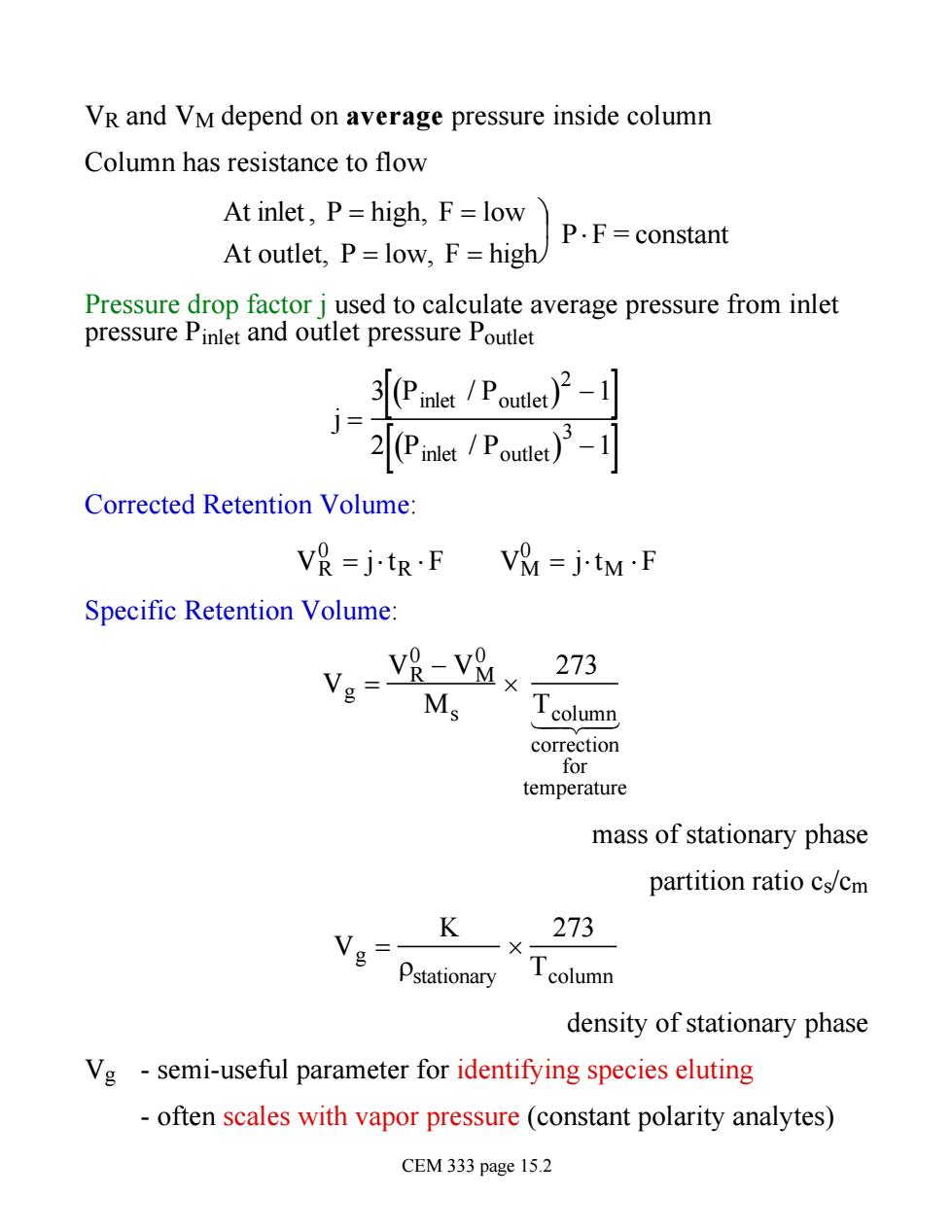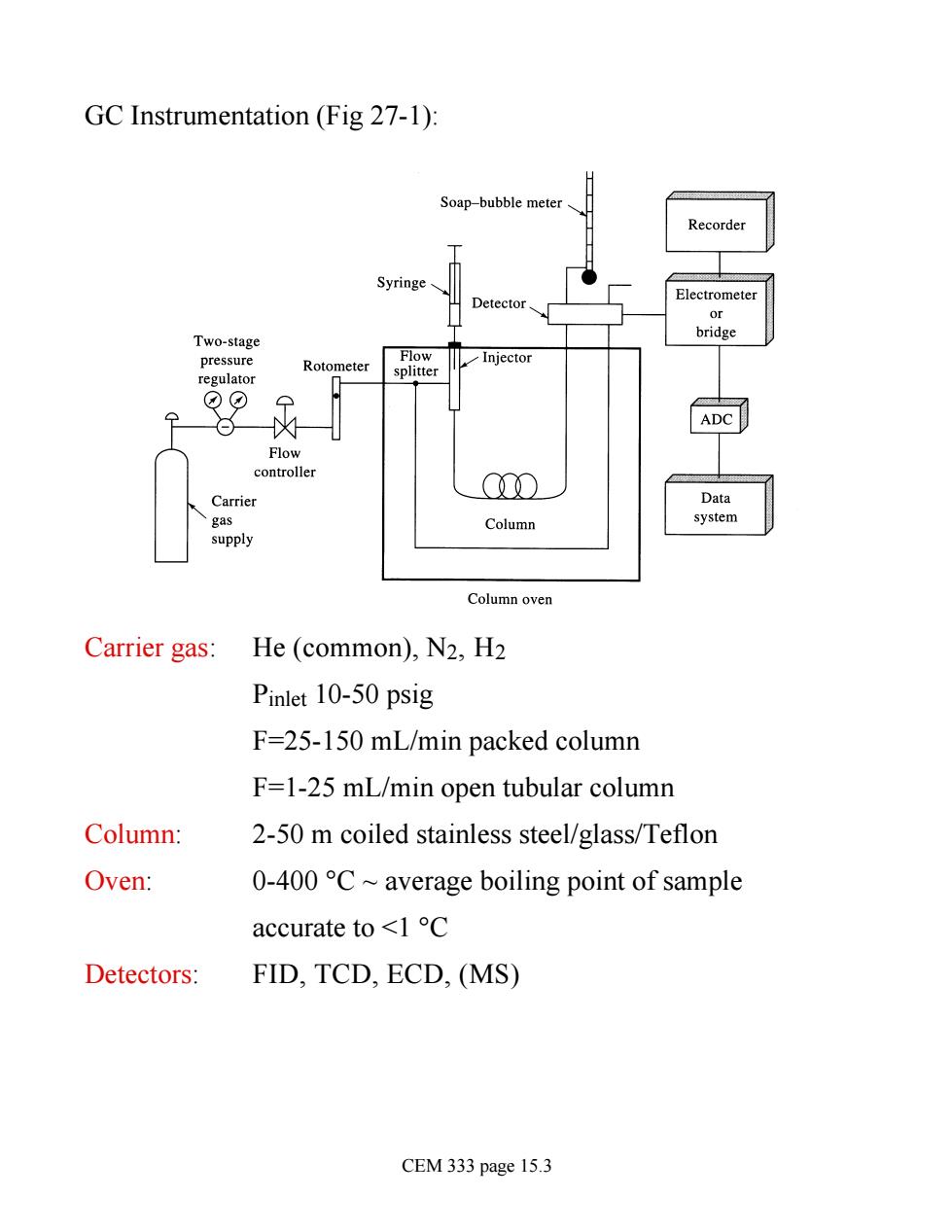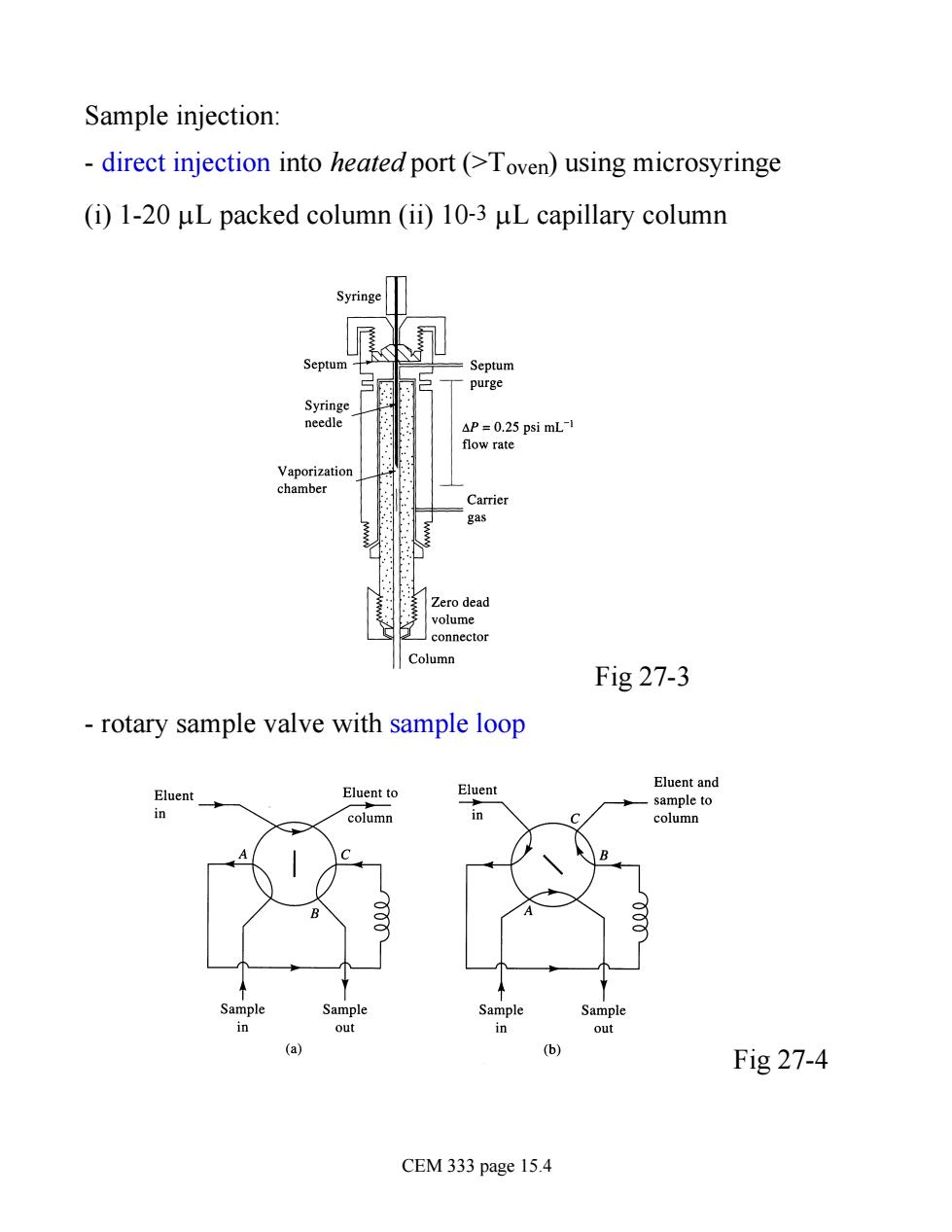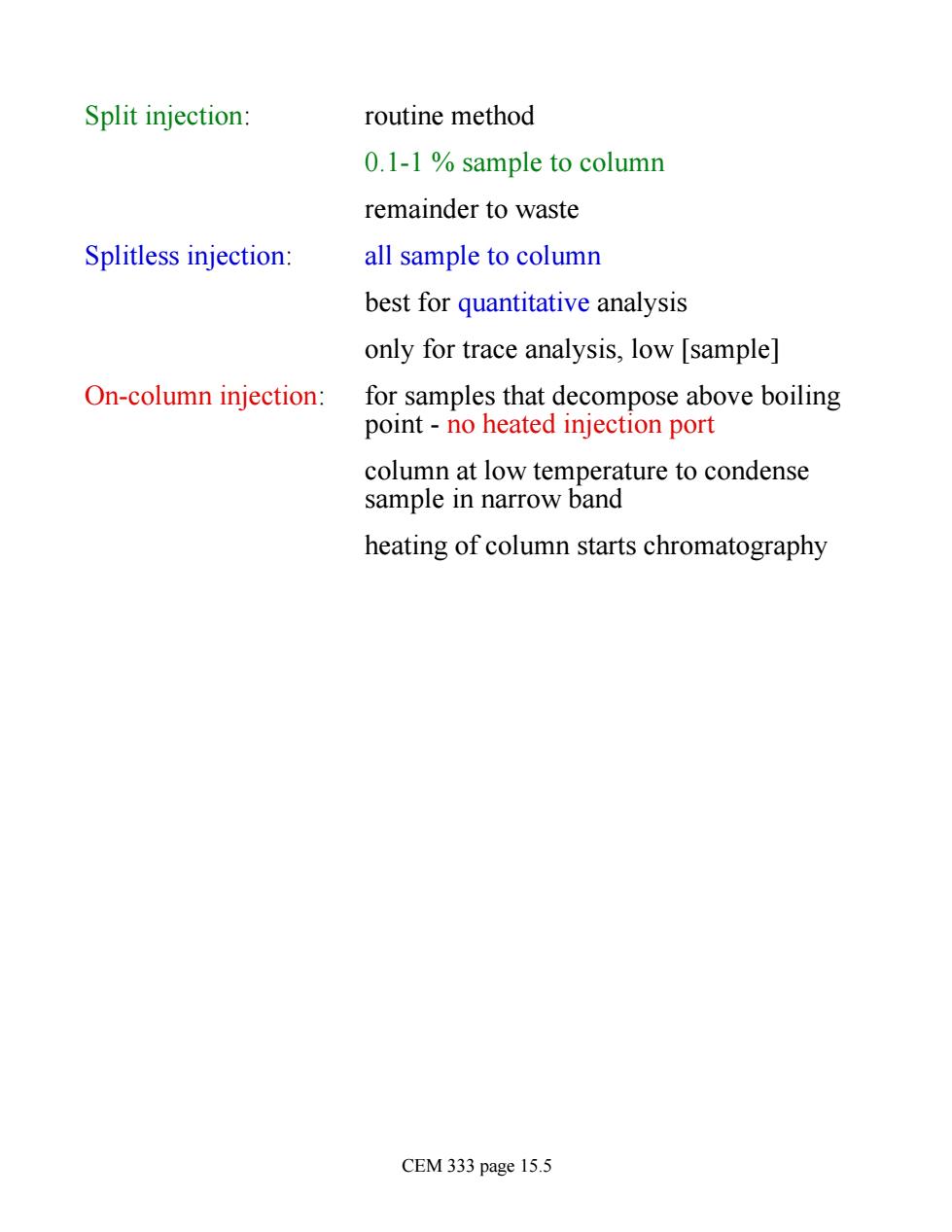
Gas Chromatography (Chapter 27) Two major types Gas-solid chromatography (stationary phase:solid) Gas-liquid chromatography (stationary phase:immobilized liquid) Retention Volume: VR=tR·F VM=tM.F retained non-retained average volumetric flow rate (mL/min) F can be estimated by measuring flow rate exiting the column using soap bubble meter (some gases dissolving in soap solution) but measured VR and VM depend on pressure inside column temperature of column CEM 333 page 15.1
Gas Chromatography (Chapter 27) Two major types • Gas-solid chromatography (stationary phase: solid) • Gas-liquid chromatography (stationary phase: immobilized liquid) Retention Volume: VR = tR ×F retained 1 4 2 4 3 VM = tM ×F non-retained 1 4 2 4 3 average volumetric flow rate (mL/min) F can be estimated by measuring flow rate exiting the column using soap bubble meter (some gases dissolving in soap solution) but measured VR and VM depend on • pressure inside column • temperature of column CEM 333 page 15.1

VR and VM depend on average pressure inside column Column has resistance to flow At inlet,P=high,F=low P.F=constant At outlet.P=low.F=high/ Pressure drop factor j used to calculate average pressure from inlet pressure Pinlet and outlet pressure Poutlet 3(Pinlet /Poutlet)-1 j= 2(Pinlet /Poutlet)-1 Corrected Retention Volume: VR=j.tR-F VM =j.tM.F Specific Retention Volume: Vg=,8x 273 M. column correction for temperature mass of stationary phase partition ratio cs/cm K 273 一× Tcolumn density of stationary phase Vg -semi-useful parameter for identifying species eluting often scales with vapor pressure (constant polarity analytes) CEM 333 page 15.2
VR and VM depend on average pressure inside column Column has resistance to flow At inlet , P = high, F = low At outlet, P = low, F = high ö ø ÷ P×F = constant Pressure drop factor j used to calculate average pressure from inlet pressure Pinlet and outlet pressure Poutlet j = 3 Pinlet / Poutlet ( ) 2 -1 [ ] 2 Pinlet ( / Poutlet) 3 -1 [ ] Corrected Retention Volume: VR 0 = j×tR ×F VM 0 = j×tM ×F Specific Retention Volume: Vg = VR 0 - VM 0 Ms ´ 273 Tcolumn correction for temperature 1 4 2 4 3 mass of stationary phase partition ratio cs/cm Vg = K rstationary ´ 273 Tcolumn density of stationary phase Vg - semi-useful parameter for identifying species eluting - often scales with vapor pressure (constant polarity analytes) CEM 333 page 15.2

GC Instrumentation (Fig 27-1): Soap-bubble meter Recorder Syringe Detecto Two-stage Injector troller 00 Carrier Column Column oven Carrier gas:He(common).N2.H2 Pinlet 10-50 psig F=25-150 mL/min packed column F=1-25 mL/min open tubular column Column: 2-50 m coiled stainless steel/glass/Teflon Oven: 0-400 C average boiling point of sample accurate to <1 C Detectors: FID,TCD,ECD,(MS) CEM 333 page 15.3
GC Instrumentation (Fig 27-1): Carrier gas: He (common), N2, H2 Pinlet 10-50 psig F=25-150 mL/min packed column F=1-25 mL/min open tubular column Column: 2-50 m coiled stainless steel/glass/Teflon Oven: 0-400 °C ~ average boiling point of sample accurate to <1 °C Detectors: FID, TCD, ECD, (MS) CEM 333 page 15.3

Sample injection: direct injection into heated port (>Toven)using microsyringe (i)1-20 uL packed column (ii)10-3 uL capillary column Syringe Septum P=0.25 psi mL- connector Column Fig 27-3 rotary sample valve with sample loop Eluent Eluent to column column (b) Fig27-4 CEM 333 page 15.4
Sample injection: - direct injection into heated port (>Toven) using microsyringe (i) 1-20 mL packed column (ii) 10-3 mL capillary column Fig 27-3 - rotary sample valve with sample loop Fig 27-4 CEM 333 page 15.4

Split injection: routine method 0.1-1%sample to column remainder to waste Splitless injection: all sample to column best for quantitative analysis only for trace analysis,low [sample] On-column injection: for samples that decompose above boiling point no heated injection port column at low temperature to condense sample in narrow band heating of column starts chromatography CEM 333 page 15.5
Split injection: routine method 0.1-1 % sample to column remainder to waste Splitless injection: all sample to column best for quantitative analysis only for trace analysis, low [sample] On-column injection: for samples that decompose above boiling point - no heated injection port column at low temperature to condense sample in narrow band heating of column starts chromatography CEM 333 page 15.5